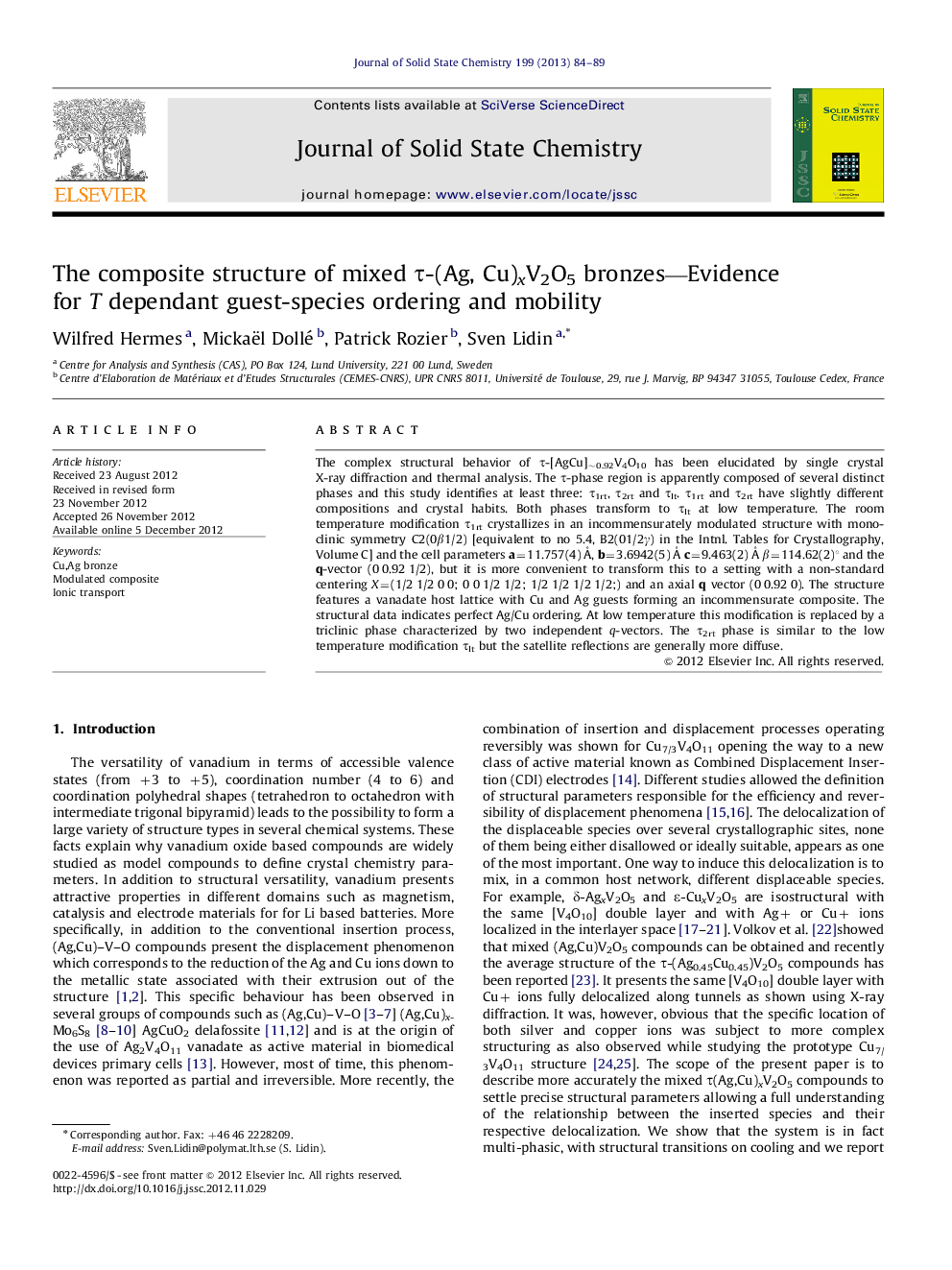| Article ID | Journal | Published Year | Pages | File Type |
|---|---|---|---|---|
| 1329983 | Journal of Solid State Chemistry | 2013 | 6 Pages |
The complex structural behavior of τ-[AgCu]∼0.92V4O10 has been elucidated by single crystal X-ray diffraction and thermal analysis. The τ-phase region is apparently composed of several distinct phases and this study identifies at least three: τ1rt, τ2rt and τlt. τ1rt and τ2rt have slightly different compositions and crystal habits. Both phases transform to τlt at low temperature. The room temperature modification τ1rt crystallizes in an incommensurately modulated structure with monoclinic symmetry C2(0β1/2) [equivalent to no 5.4, B2(01/2γ) in the Intnl. Tables for Crystallography, Volume C] and the cell parameters a=11.757(4) Å, b=3.6942(5) Å c=9.463(2) Å β=114.62(2)° and the q-vector (0 0.92 1/2), but it is more convenient to transform this to a setting with a non-standard centering X=(1/2 1/2 0 0; 0 0 1/2 1/2; 1/2 1/2 1/2 1/2;) and an axial q vector (0 0.92 0). The structure features a vanadate host lattice with Cu and Ag guests forming an incommensurate composite. The structural data indicates perfect Ag/Cu ordering. At low temperature this modification is replaced by a triclinic phase characterized by two independent q-vectors. The τ2rt phase is similar to the low temperature modification τlt but the satellite reflections are generally more diffuse.
Graphical AbstractOverview of the structure of τ1-[AgCu]0.92V2O5. Note how Cu ions (brown) are modulated in the direction of the columns only while the silver ions (green) are displaced in all directions.Figure optionsDownload full-size imageDownload as PowerPoint slideHighlights► Insertion/removal of Ag/Cu understood from a composite perspective. ► Ordering of Cu/Ag in an incommensurate composite. ► Complex thermal behaviour. ► Extreme compositional dependence of order.
